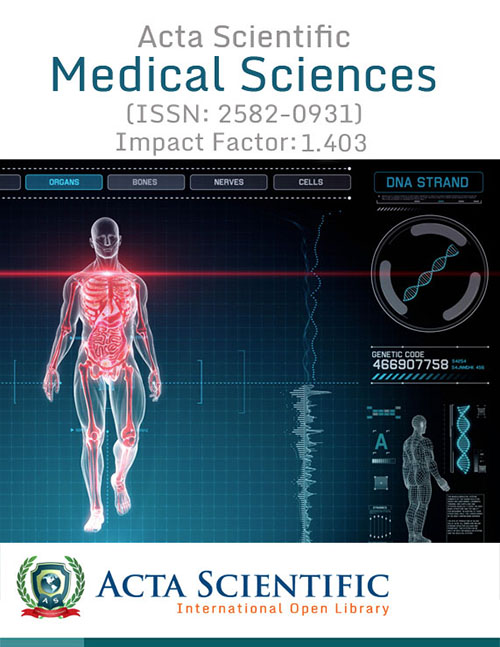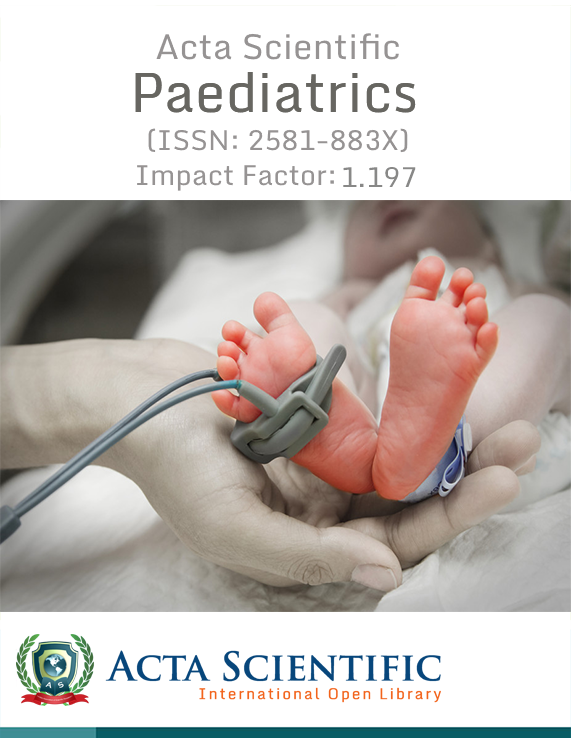Acta Scientific Ophthalmology (ASOP)
Review Article Volume 3 Issue 8
Mehul Shah*, Shreya Shah, Ruhi Gunay and Raunaq Khanna
Drashti Netralaya, Dahod, Gujarat, India
*Corresponding Author: Mehul Shah, Professor, Drashti Netralaya, Dahod, Gujarat, India.
Received: July 12, 2020; Published: July 28, 2020
Abstract
Purpose: Nucleus drop is a rare and serious complication. We investigated visual outcomes following corrective surgery and compared outcomes between surgeries performed in various aetiologies.
Method: A retrospective cohort study was performed after obtaining the approval of the ethical committee. The data of patients who underwent vitrectomy for nucleus drop were collected from electronic medical records. Patients were grouped based on the following aetiologies: traumatic, iatrogenic, spontaneous, and congenital. After pars plana vitrectomy and nucleus removal, comorbidities were managed either medically or surgically. All data were collected according to a pretested format and exported to SPSS 22.
Results: Our cohort consisted of 169 eyes of 169 patients. The mean age of patients was 55.36 ± 15.7 years. Of 169 patients, 107 (63.3%) were men and 62 (33.7%) were women. Of 169 patients, 44 (26%) were classified as having traumatic nucleus drop and 125 (74%) developed spontaneous nucleus drop without trauma following cataract surgeries (Table 2). In the iatrogenic group, 33 (38.56%) patients developed nucleus drop during phacoemulsification and 59 (62.9%) following MSICS.
Conclusion: The visual outcome following corrective vitrectomy for nucleus drop may be satisfactory if managed well; no significant difference in the outcome was noted based on the aetiology.
Keywords: Nucleus Drop; Traumatic Nucleus Drop; Iatrogenic Nucleus Drop; Visual Outcome
References
- Lawani R., et al. “Magnitude and strategies of cataract management in the world”. Medecine Tropicale (Mars) 67 (2007): 644-650.
- Shah MA., et al. “Final visual outcome following re exploration of cataracts performed by trainee surgeons in India”. Indian Journal of Medical Sciences 65 (2011): 365-370.
- Bulletin of the World Health Organization 77.6 (1999).
- Hennig A., et al. “Suture less cataract surgery with nucleus extraction: outcome of a prospective study in Nepal”. British Journal of Ophthalmology 87 (2003): 266-270.
- Gogate PM., et al. “Safety and efficacy of phacoemulsification compared with manual small incision cataract surgery by a randomized controlled clinical trial: six-week results”. Ophthalmology 112 (2005): 869-874.
- Kalantan H. “Posterior polar cataract: A review”. Saudi Journal of Ophthalmology1 (2012): 41-49.
- Das S., et al. “Surgical and visual outcomes for posterior polar cataract”. British Journal of Ophthalmology 92 (2008): 1476-1478.
- Khatry SK., et al. “The epidemiology of ocular trauma in rural Nepal”. British Journal of Ophthalmology 88 (2004): 456-460.
- Abraham DI., et al. “Epidemiology of eye injuries in rural Tanzania”. Ophthalmic Epidemiology 6 (1999): 85-94.
- D Virgil Alfaro., et al. “Fishing-related ocular trauma”. American Journal of Ophthalmology 139 (2005): 488-492.
- Shah M., et al. “Ocular injuries and visual status before and after Their management in the tribal areas of Western India-A historical cohort study”. Graefe's Archive for Clinical and Experimental Ophthalmology 246 (2008): 191-197.
- Kuhn F., et al. “The Birmingham Eye Trauma Terminology system (BETT)”. Journal Français D'Ophtalmologie 27 (2004): 206-210.
- Shah M., et al. “Visual recovery and predictors of visual prognosis after managing traumatic cataracts in 555 patients”. Indian Journal of Ophthalmology 59 (2011): 217-222.
- Shah MA., et al. “Ocular Trauma Score as a predictor of final visual outcomes in traumatic cataract cases in pediatric patients”. Journal of Cataract and Refractive Surgery 38 (2012): 959-965.
- Shah MA., et al. “Ocular Trauma Score: a useful predictor of visual outcome at six weeks in patients with traumatic cataract”. Ophthalmology 119 (2012): 1336-1341.
- Shah MA., et al. “Comparative study of final visual outcome between open- and closed-globe injuries following surgical treatment of traumatic cataract”. Graefe's Archive for Clinical and Experimental Ophthalmology 249 (2011): 1775-1781.
- Shah MA., et al. “Effect of interval between time of injury and timing of intervention on final visual outcome in cases of traumatic cataract”. European Journal of Ophthalmology 21 (2011): 760-765.
- Rotimi-Samuel A., et al. “Nucleus drop during small incision cataract surgery: A report of four cases”. Nigerian Postgraduate Medical Journal 4 (2015): 237-240.
- Hashem H., et al. “Intraoperative Complications of Cataract Surgery in Tehran Province, Iran”. Optometry and Vision Science 93 (3): 266-271.
- Fesharaki H., et al. “A comparative study of complications of cataract surgery with phacoemulsification in eyes with high and normal axial length”. Advanced Biomedical Research 1 (2012): 67.
- Malhotra C., et al. “Phacoemulsification in posterior polar cataract: Experience from a tertiary eye care Centre in North India”. Indian Journal of Ophthalmology4 (2020): 589-594.
- Sachdev MS., et al. “Femtosecond laser-integrated anterior segment optical coherence tomography to detect preexisting posterior capsular dehiscence and increase safety in posterior polar cataracts”. Journal of Cataract and Refractive Surgery 46 (2): 235-240.
- Das S., et al. “Surgical and visual outcomes for posterior polar cataract”. British Journal of Ophthalmology11 (2008): 1476-1478.
- Kapoor G., et al. "Posterior polar cataract: Minimizing risks”. Medical Journal Armed Forces India 3 (2016): 242-246.
- Kagmeni G., et al. “Ophthalmological findings in Cameroonian boxers”. Clinical Ophthalmology 11 (2017): 1121-1126.
- Rosignoli LM., et al. “Exercise band-induced lens dislocations: A case series”. American Journal of Ophthalmology Case Reports 15 (2019): 100496.
- Shanmugam MP., et al. “Post-traumatic suprachoroidal dislocation of crystalline lens and its management”. Indian Journal of Ophthalmology9 (2019): 1469-1470.
- Bawankar P., et al. “A rare case of traumatic subretinal migration of crystalline lens, corroborated histologically”. Indian Journal of Ophthalmology12 (2017): 1495-1497.
- Arranz-Marquez E., et al. “Late onset lens particle glaucoma in Marfan syndrome”. Archivos de la Sociedad Espanola de Oftalmologia 1 (2014): 40-43.
- Ochi R., et al. “Case of retinal ischemia and retinal arteritis secondary to intravitreal nuclear drop”. Nippon Ganka Gakkai Zasshi12 (2011): 1101-1104.
- Kuiper J and M Slabaugh. "Secondary Angle Closure due to Crystalline Lens Dislocation in a Patient with Atopic Dermatitis and Chronic Eye Rubbing”. Case Reports on Ophthalmology1 (2018): 197-201.
- Ke G., et al. “Retinal break associated with traumatic lens dislocation or subluxation requiring vitrectomy”. Graefe's Archive for Clinical and Experimental Ophthalmology3 (2020): 693-697.
- Fujikawa A., et al. “Visual outcomes and prognostic factors in open-globe injuries”. BMC Ophthalmology1 (2018): 138.
- Choovuthayakorn J., et al. “Epidemiology of Eye Injuries Resulting in Hospitalization, a Referral Hospital-Based Study”. Clinical Ophthalmology 14 (2020): 1-6.
- Weaver AA., et al. “Injury risk prediction from computational simulations of ocular blast loading”. Biomechanics and Modeling in Mechanobiology 2 (2017): 463-477.
- Wu S., et al. “Corneal decompensation due to spontaneous absorption of lens and anterior dislocation of lens capsule: A case report”. Medicine (Baltimore) 98.50 (2019): e18417.
- Kuruvilla SE., et al. “Microcornea and bilateral ectopia lentis in an infant: unusual severe ocular presentation of neonatal Marfan syndrome”. Journal of AAPOS 2 (2019): 107-108.
- Bhattacharjee H., et al. “Bilateral spontaneous anterior dislocation of intraocular lens with the capsular bag in a patient with pseudoexfoliation”. Indian Journal of Ophthalmology10 (2015): 796-798.
- Ojaghihaghighi S., et al. “Diagnosis of Traumatic Eye Injuries with Point-of-Care Ocular Ultrasonography in the Emergency Department”. Annals of Emergency Medicine3 (2019): 365-371.
- Gad K., et al. “CT in the Evaluation of Acute Injuries of the Anterior Eye Segment”. American Journal of Roentgenology6 (2017): 1353-1359.
- Thelen J and AA Bhatt. "Acute ocular traumatic imaging: what the radiologist should know [corrected]”. Emergency Radiology5 (2017): 585-592.
- Patil KB., et al. “Pars plana vitrectomy with posterior iris claw implantation for posteriorly dislocated nucleus and intraocular lens”. Indian Journal of Ophthalmology6 (2011): 497-500.
- Gurunadh VS., et al. “Management of Nucleus and IOL Drop”. Medical Journal Armed Forces India 4 (2008): 315-316.
- Kaynak S., et al. “Staining of vitreous with triamcinolone acetonide in retained lens surgery with phacofragmentation”. Journal of Cataract and Refractive Surgery1 (2006): 56-59.
- Bhattacharjee H., et al. “Pathology and immunohistochemistry of capsular bag in spontaneously late dislocated capsular bag-intraocular lens complex”. Indian Journal of Ophthalmology10 (2017): 949-954.
- Kelkar A., et al. “Primary iris claw IOL retrofixation with intravitreal triamcinolone acetonide in cases of inadequate capsular support”. International Ophthalmology1 (2018): 111-117.
- Agarwal A., et al. “Glued intraocular lens scaffolding to create an artificial posterior capsule for nucleus removal in eyes with posterior capsule tear and insufficient iris and sulcus support”. Journal of Cataract and Refractive Surgery3 (2013): 326-33.
- Farrahi F., et al. “Iris Claw versus Scleral Fixation Intraocular Lens Implantation during Pars Plana Vitrectomy”. Journal of Ophthalmic and Vision Research 2 (2012): 118-124.
- Fiorentzis M., et al. “Methods of fixation of intraocular lenses according to the anatomical structures in trauma eyes”. Clinical Anatomy1 (2017): 6-15.
Citation
Citation: Mehul Shah., et al. “Comparative Study of Visual Outcomes Following Vitrectomy for Nucleus Drop Caused by Various Aetiologies”.Acta Scientific Ophthalmology 3.8 (2020): 41-47.
Copyright
Copyright: © 2020 Mehul Shah., et al. This is an open-access article distributed under the terms of the Creative Commons Attribution License, which permits unrestricted use, distribution, and reproduction in any medium, provided the original author and source are credited.
Journal Menu
Metrics
News and Events
- Publication Certificate
Authors will be provided with the Publication Certificate after their successful publication - Last Date for submission
Authors are requested to submit manuscripts on/before January 23, 2025, for the Second issue of 2026.


















